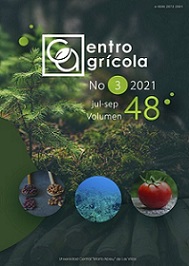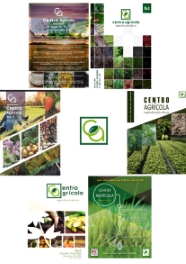CE: 1736 CF:cag03318
SCIENTIFIC ARTICLE
Characterization of Phytophthora, the etiological agent of black pod rots of cocoa cob in Cuba and French Guiana
Caracterización de Phytophthora, agente etiológico de la pudrición negra de la mazorca del cacao en Cuba y Guyana Francesa
Yurelkys Fernández Maura1, Philippe Lachenaud2, Cony Decock3, Amauri Díaz Rodríguez4, Noryaisi Abreu Romero4
1Facultad Agroforestal, Universidad de Guantánamo, Avenida Che Guevara km 1.5 Carretera Jamaica, Guantánamo, Cuba, E-mail: This email address is being protected from spambots. You need JavaScript enabled to view it.
2CIRAD, UPR 106, BP 701, 97398 KourouCedex, France
3Mycothèque de l'Université catholique de Louvain (MUCL, BCCMTM), Earth and Life Institute – Microbiology (ELIM), Université catholique de Louvain, Croix du Sud 2 bte L7.05.06, B-1348 Louvain-la-Neuve, Belgium
4Centro de Desarrollo de la Montaña, Limonar de Monte Ruz, El Salvador, Guantánamo
ABSTRACT
Black pod is one of the major like-fungal diseases of Theobroma cacao L. in all its cultivation areas. It is caused by several species of Phytophthora. In Latin America, the etiological agents of the black pod disease are more likely diverse and, in a taxonomic perspective, incompletely known, especially in small producing countries, such as Cuba and French Guiana. In the present work, we studied two sets of Phytophthora strains isolated from diseased pods and originating from Cuba and French Guiana, combining morphological, biological and molecular approaches to identify the species involved. Phylogenetic analyses were performed based on DNA sequence data from two loci, ribosomal internal transcribed spacer and partial β-tubulin. Two species were identified in Cuba, P. palmivora and P. tropicalis, and two species in French Guiana, P. tropicalis / capsici complex and a potential novel Phytophthora sp. In Cuba, P. palmivora was by far the dominant species (98% of the isolates) and the strains studied belonged to the Mating Type A2 (88 out of 90 isolates). In French Guiana, P. tropicalis / capsici complex was the dominant species in our sampling (7 out of 8 isolates).






